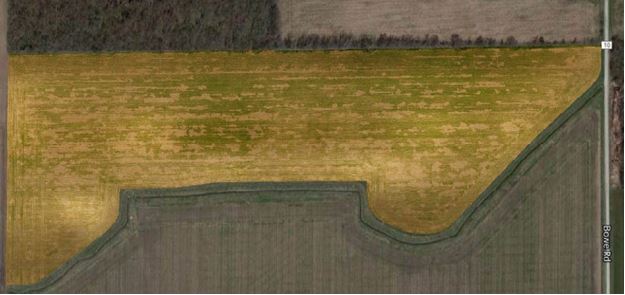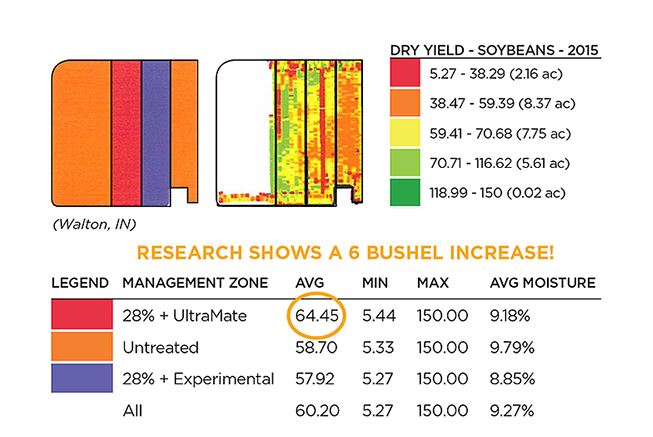Agronomy Update October 2019
Posted by Dave Dyson, Agronomist on October 24, 2019

MANAGEMENT
By Dave Dyson, Agronomist
The cover crop planting season is upon us. Cover crop recommendations can be as numerous as stars in the sky. Everyone seems to have their own recipe for the “perfect” mix to improve the soil’s needs. As harvest progresses, there are a few decisions to make such as cover crop selection and fall burndown application. When making these decisions, there are a few items to consider in order to maximize your cover crop benefits.
First, know your objectives when planting a cover crop. Cover crops can be used for soil erosion control, nutrient capture, weed suppression, and building organic matter. Identifying what is important to you will help you in selecting the right cover crop for your needs.
If you are looking for a cover crop that will capture extra nutrients over the winter and you will be planting corn the following year, oats and radishes are a good fit, Figure 1. This combination is suited to plant before corn because both the oats and radishes will terminate in February, leaving the ground free of green material in the spring, providing a suitable seedbed to plant corn.
Figure 1: Radish and oat cover crop.
If suppressing weeds, especially marestail, is your concern, consider planting cereal rye, Figure 2. Cereal rye emits an allelopathic chemical that prevents marestail from germinating. Once the cereal rye is established, a 2,4-D and dicamba combination can be applied in the fall to give the marestail a 1-2 punch. The biomass generated by cereal rye will also suppress weed seed germination in the fall and spring; plus it is easy to terminate in the spring. If you are planting dicamba-resistant soybeans, apply a single rate of glyphosate and dicamba paired with a residual herbicide prior to planting.
Figure 2: Cereal rye grass seed.
As you select your cover crop, consider whether you will be utilizing an aerial or ground application. If an airplane is preferred to plant the cover crop, cereal rye is a great option due to the size and weight of the seed, Figure 2.
When applying fall burndown, consider adding UltraMate® LQ to the tank mix. The addition of UltraMate LQ will help degrade the crop residue left over from the previous crop. If left untreated, the corn stalks left in the field after harvest may damage equipment and tires when planting in the spring.
As spring arrives and it is time to burn down the cover crop, it is essential to include an insecticide in the spray tank. Spring storms don’t only bring tornados, they also bring cutworm moths. Cutworm moths ride the winds of storms and land on the first green field they see. Cutworms can be devastating to young corn. In addition to cutworm, vole damage has become apparent in cover crop fields the last few years, Figure 3. Voles can destroy both corn and soybean stands.
Figure 3: This picture, taken with a drone by The Andersons near Gibsonburg, OH, shows the devastation voles can do to crops.
In conclusion, take the time to select the proper cover crop based on your objectives and needs. Be mindful of terminating the cover crop in a timely manner in the spring. Adding UltraMate LQ to a fall or spring herbicide application will help degrade the previous crop residue. During spring burndown, the addition of an insecticide to control pests that may make the cover crop home will help with crop emergence next spring.
RESEARCH
By Dave Dyson, Agronomist
Excessive crop residue left on top of the soil can cause havoc during planting by being hair-pinned in the furrow with the seed, Figure 4. Even though residue prevents soil erosion by wind and water, it can lock up nutrients that would benefit both the crops and soil structure. Including 1 gal/ac of UltraMate LQ with a fall burndown application has shown a consistent yield increase in research trials over multiple geographies and multiple years, Figure 5.
Figure 4: This picture, taken near Elkhart, Indiana, in the spring of 2018, shows residue hair- pinned in with the seed by the planter. This causes seedling death, late emergence, and possible blank stalks.
Figure 5: A 2015 residue management study revealed a 6 bu/A increase in soybean yield on corn stalk acres receiving an application of 28% UAN with UltraMate LQ.
UltraMate LQ is a sulfonated potassium formulation. It forms a complete solution when added directly to liquid fertilizer, micronutrient, or pesticide formulations over a wide range of pH values. Applying a residue treatment within two weeks after corn harvest has regularly shown a 4-5 bushel increase in soybean yield the following year.
FOR MORE INFORMATION:
Please complete the form, and we’ll get you in touch with your Territory Manager from The Andersons.
©2019 The Andersons, Inc. All rights reserved. UltraMate LQ is a registered trademark of The Andersons, Inc.







